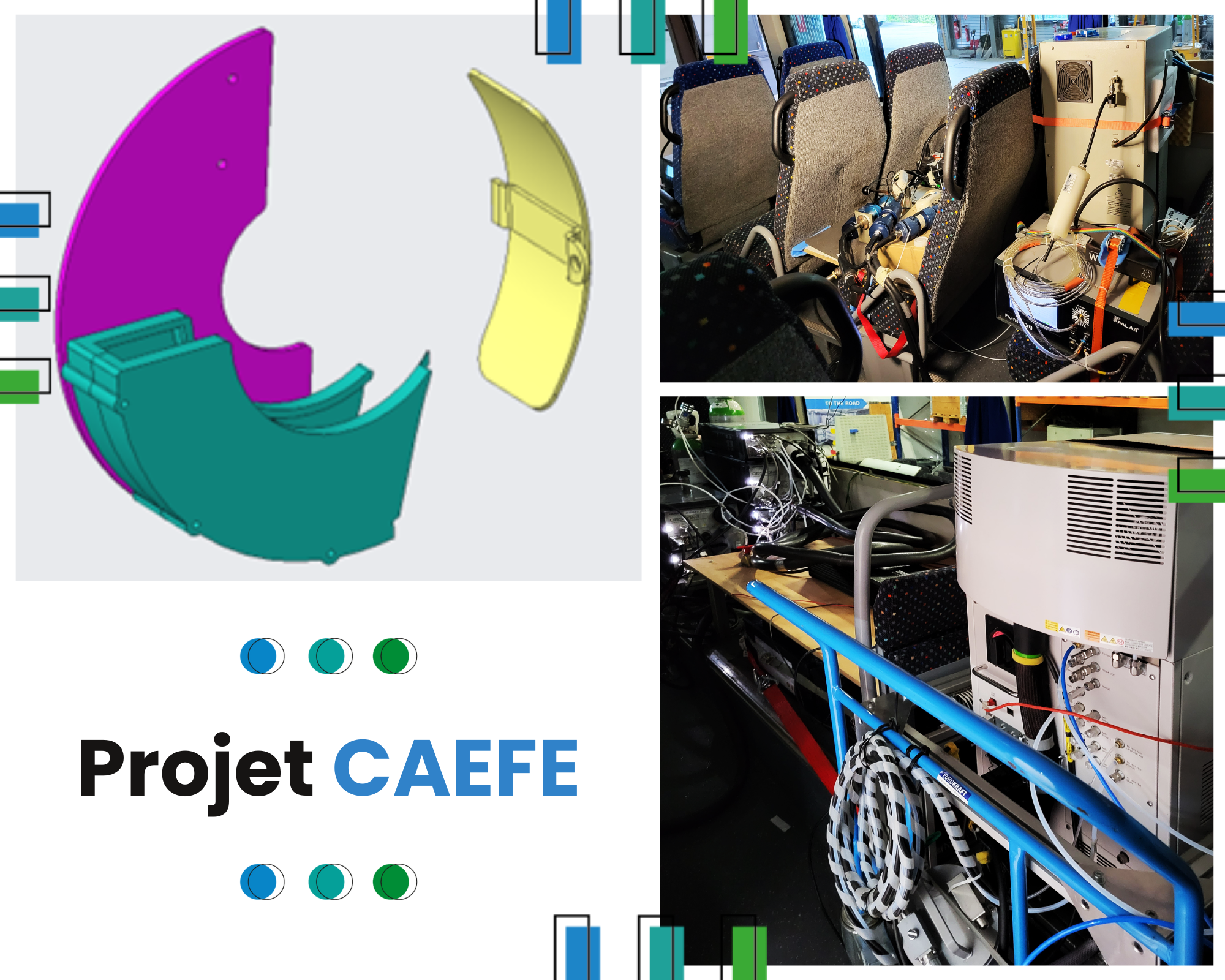NoNOx: Retrofit system for NOx elimination
A single retrofit with NoNOx technology eliminates the equivalent of 15 bus emissions for the city of Grenoble! Composed of a catalyst that removes pollutants from the exhaust gases of CNG buses and a monitoring system that guarantees its smooth operation, NoNOx technology eliminates:
- 32% of NOx,
- 60% of HC,
- 100% of CO
This project was developed by the CRMT in partnership with SEMITAN, INNOV'R, Bpifrance and ADEME, which is partly involved in its financing.
CORTEA: light vehicles and RDE cycles
As part of the CORTEA project (Connaissances, Réduction à la source et Traitement des Emissions dans l’Air), CRMT measures unregulated gaseous pollutants emitted during RDE cycles carried out by Diesel, Gasoline and Natural Gas light vehicles.
For this, CRMT is working on the development of an embeddable FTIR (Fourier-Transform Infrared Spectroscopy) analyzer which will make it possible to measure, in addition to regulated pollutants (NO, NO2, CO, CO2, THC, NH3), Volatile Organic Compounds ( VOCs), sulfur compounds, cyclic and aromatic products (toluene, benzene, etc.), formalize, formic acid, etc.
FTIR analyzers are very similar to PEMS, they are compact in size and allow the simultaneous measurement of several components of the engine exhaust gases. They are currently not embeddable in vehicles.
The targeted pollutants are now excluded from the required vehicle certification criteria, and yet are very important to take into account. The results obtained by CRMT will contribute to the definition of new criteria which will be at the origin of tomorrow's automotive standards.
This project is carried out within the framework of CORTEA projects of ADEME, which partly contributes to its financing.
BusOnline: Measurements in real traffic conditions with CEMS technology
Oxides of nitrogen (NOx) and ammonia (NH3) are two of the three main gases that contribute to the phenomenon of acidification of the environment (air, soil, water, vegetation ...).
As part of the BusOnline project, CRMT continuously measured NOx and NH3 emissions emitted by vehicles in real traffic conditions with its CEMS technology.
BusOnline was produced as part of ADEME's AURATRANS projects, which partly contributed to its financing.
PUF : Ultra Fine Particles emitted by heavy vehicles
PUFs are particles of nanometric size (less than 0.1 μm or 100 nanometers in diameter). They are so small that they behave like gases. As part of the PUF project, CRMT was responsible for the development of a measurement system capable of identifying these ultra-fine particles emitted by heavy vehicles.
This project was carried out within the framework of ADEME's AURATRANS projects, which partly contributed to its financing.
CAEFE Project

CUSTOMER PROBLEM Road transport has a major impact on air pollution, especially in urban areas, by emitting various pollutants such as hydrocarbons (HC), carbon monoxide (CO), nitrogen oxides (NOx), volatile organic compounds (VOCs), heavy metals and fine particles. A growing proportion of fine particulates is generated by wear and tear on brakes, tires and road surfaces.
With the support of ADEME, Gustave Eiffel University and Telma, CRMT is working on characterizing and comparing emissions of brake and exhaust pollutants on a coach in operating conditions. CRMT has carried out a campaign to measure both exhaust and non-exhaust pollutant emissions from a coach's brakes, under actual operating conditions. The aim of this study is to understand and evaluate these emissions, and to propose solutions to reduce them and thus improve air quality.
CRMT SOLUTION The project was developed in two phases:
Firstly, CRMT applied its expertise in the modeling and design of customized particle collection devices (technical choices, prototyping and modeling, manufacturing management and instrumentation). The teams thus developed a brake particle sampling system dedicated to the bus under test.
The vehicle was then put through its paces on a school run, simulating the constraints associated with the use of a school bus: frequent and prolonged stops, short route, ensuring high brake loads. The coach was then tested on a certification route (ISC type) with a complete cycle including urban, extra-urban and freeway journeys. This second campaign enabled comparisons to be made between the use and non-use of the Telma device, an electromagnetic retarder that emits no fine particles thanks to its frictionless design.
Several measuring instruments were used, including FTIR (Fourier Transform Infrared Spectroscopy), which measures emissions of regulated and non-regulated pollutants such as: VOCs, methanol, ethanol, acetaldehyde, MTBE, DME, acetone, SO2, acetic acid, etc..,
An exhaust flowmeter and various PEMS (Portable Emissions Measurement Systems) were also used to measure various pollutants: CO, HC, NOx, CO2, NO2,
THE PLUS CRMT's experience in the engineering, development and integration of brake particle collection systems, as well as in on-board measurements, means we can offer complete expertise from the design of a particle collection solution to the execution of the test campaign.


